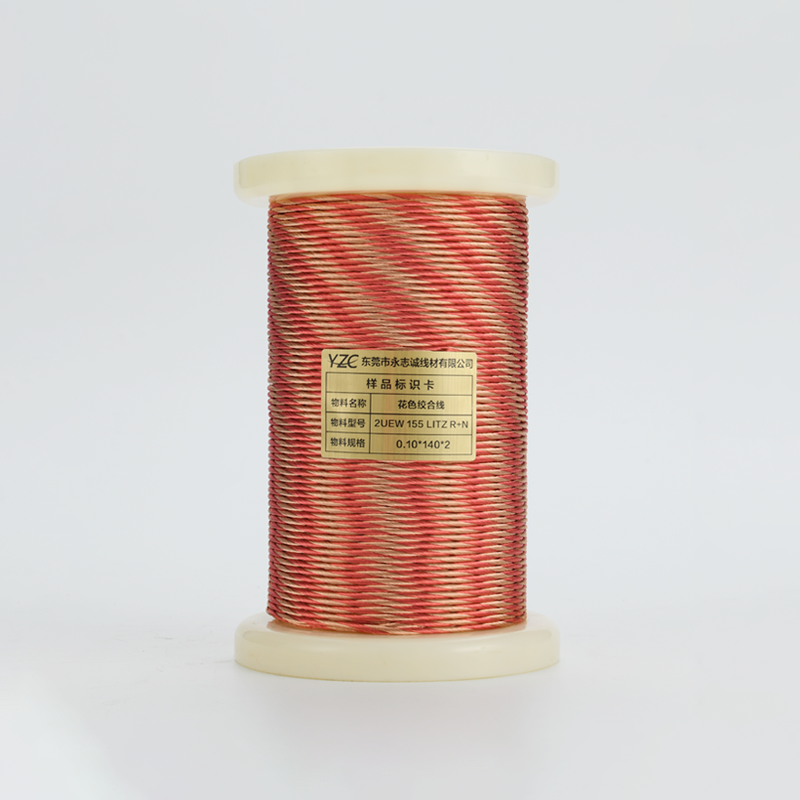Determine the stranded wire stranding pitch need to consider a number of factors, and the pitch size of the stranded wire has an important impact on the performance.
First, determine the method of stranding pitch
According to the application requirements:
Signal transmission: for high-frequency signal transmission applications, such as communications cables, radio frequency cables, etc., usually require a smaller stranded pitch. This is because a smaller pitch can reduce signal reflection and attenuation, improve the quality and stability of signal transmission. For example, in network cables for high-speed data transmission, the strand pitch may be between a few millimetres and a dozen millimetres to ensure signal integrity.
Power transmission: In the field of power transmission, the choice of stranding pitch is mainly based on current capacity and voltage level. Larger currents require larger conductor cross-sectional areas, and a larger stranding pitch can be selected to improve productivity and cost. At the same time, for high voltage power cables, need to consider the electric field distribution and insulation properties, the choice of stranding pitch will also be affected.
Mechanical strength requirements: If the stranded wire needs to withstand large tensile, bending or torsional mechanical stresses, it is necessary to choose the appropriate stranding pitch to ensure its mechanical strength. Smaller pitches can increase the flexibility and bending resistance of stranded wire, but may increase productivity and cost. Conversely, a larger pitch may increase productivity, but may be mechanically stronger. Therefore, the choice of pitch needs to be balanced against specific mechanical strength requirements.
Consider conductor materials and specifications:
Conductor material: different conductor materials have different physical properties and mechanical properties, which will also affect the choice of stranding pitch. For example, copper conductors have good electrical conductivity and flexibility and are suitable for smaller stranding pitches, while aluminium conductors are relatively stiff and may require larger stranding pitches to improve flexibility.
Conductor specifications: the cross-sectional area and diameter of the conductor will also affect the choice of stranding pitch. Larger cross-sectional area conductors can be selected for a larger stranding pitch, while smaller cross-sectional area conductors may require a smaller pitch. This is because smaller cross-sectional area conductors are more susceptible to bending and twisting and require a smaller pitch to increase their flexibility and resistance to bending.

Refer to industry standards and experience:
Industry standards: When determining stranding pitch, you can refer to relevant industry standards and codes. These standards usually give ranges and requirements for stranding pitch according to different applications and product types. For example, the standard criteria for the wire and cable industry will specify the stranding pitch for different types of cables to ensure product quality and performance.
Empirical data: You can refer to previous design experience and actual application cases to understand the impact of different stranding pitch on product performance. By analysing and comparing the performance data under different pitches, it is possible to determine the suitable stranding pitch for the current application requirements. At the same time, you can also communicate with peers and share experiences to get more reference information.
Second, the impact of pitch size on performance
Electrical performance:
Signal transmission quality: smaller stranded pitch can reduce signal reflection and attenuation, improve the quality and stability of signal transmission. This is because a smaller pitch can make the inductance and capacitance of the stranded wire more uniform, reducing signal distortion and interference in the transmission process. For example, in high-frequency signal transmission, smaller pitch can signal transmission and phase error, improve the speed and accuracy of signal transmission.
Impedance matching: the size of the stranded pitch will affect the impedance characteristics of the stranded wire. Reasonable choice of pitch can make the impedance of the stranded wire and the connected equipment or system to match, reduce signal reflection and energy loss. For example, in RF circuits, the proper stranding pitch needs to be selected based on specific frequency and impedance requirements to ensure signal transmission efficiency and power capacity.
Electromagnetic compatibility: A proper stranding pitch improves the electromagnetic compatibility of the stranded wire and reduces interference with other equipment due to external electromagnetic interference. Smaller pitch can make the magnetic field of the stranded wire more uniform, magnetic field radiation and induced currents, thus improving electromagnetic compatibility.
Mechanical properties:
Flexibility and bending resistance: smaller stranding pitch can increase the flexibility and bending resistance of stranded wire. This is because a smaller pitch allows the stranded wire to deform more easily when bent, reducing the risk of stress concentrations and conductor breakage. For example, in applications that require frequent bending and movement, such as robotic cables, drag chain cables, etc., a smaller stranded pitch is often chosen to improve the use and reliability of the cable.
Tensile strength: The size of the stranding pitch also affects the tensile strength of the stranded wire. A larger pitch increases the tensile strength of stranded wire because a larger pitch allows for a larger contact area between the conductors, increasing friction and cohesion. However, too large a pitch may also cause stranded